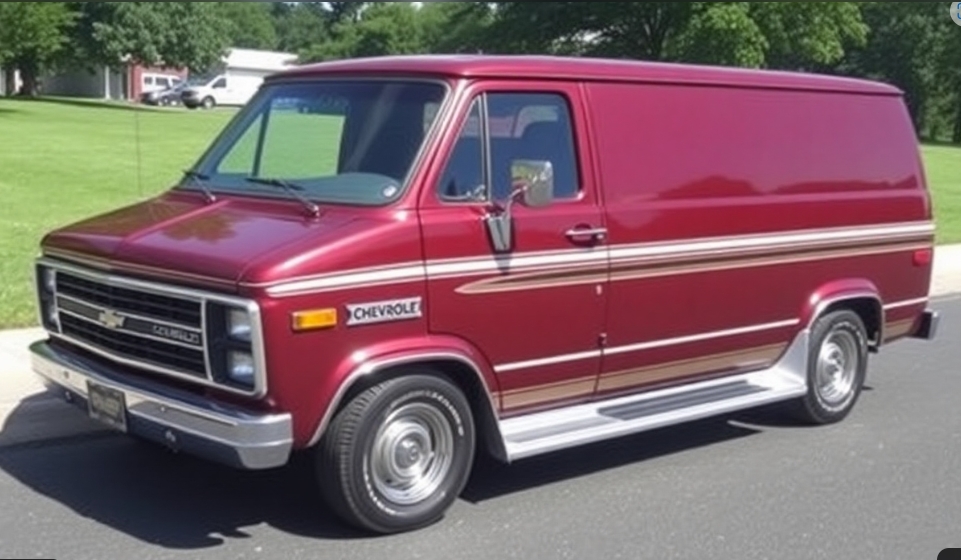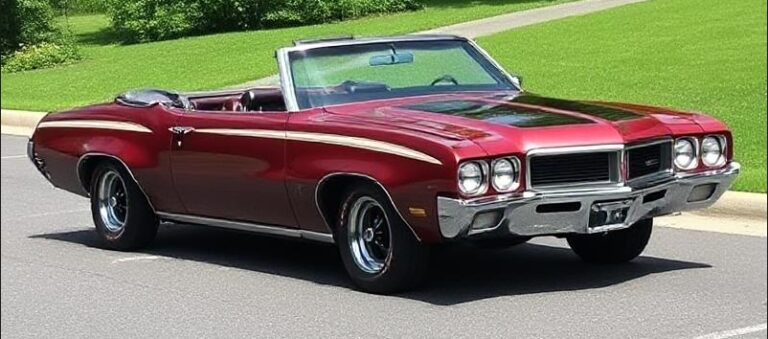The Evolution of a Legend: The Chevrolet G20 Van
The Chevrolet G20 van, a stalwart of American automotive history, represents more than just a mode of transportation; it’s a symbol of versatility, practicality, and the evolving needs of its drivers. From its humble beginnings as a workhorse to its embrace of leisure and customization, the G20’s journey across decades mirrors the shifting landscapes of American culture. This article delves into the rich history of the G20 van, tracing its evolution across its production years, exploring its various models and trim levels, and showcasing the impact it had on the automotive world and beyond.
The Foundation: First Generation (1964-1966)
The story of the G20 begins with the introduction of Chevrolet’s first generation of forward-control vans in 1964. These vans, known as the “Chevrolet Van,” were designed as competitors to the popular Ford Econoline and Dodge A100 vans that had already established themselves in the market. Built on the “A-body” platform, these vans were immediately recognizable for their distinctive forward-control design, where the engine sat between the driver and passenger seats, allowing for maximum interior space within a compact footprint.
- Years Produced: 1964-1966
- Models:
- Chevrolet Van 90: The base model, designed primarily for commercial use. Offered in cargo configurations.
- Chevrolet Van 100: Similar to the 90 but with higher payload capacity.
- Chevrolet Greenbrier Sportswagon: Chevrolet’s foray into the passenger van market, offering seating and amenities for family or leisure use. Based on the Corvair platform, it featured a distinctive air-cooled rear engine. (This model was later discontinued)
- Engines:
- The first generation of the Chevrolet Van was powered by a variety of engines, starting with a 90 horsepower 194 cubic inch inline six-cylinder. A 230 cubic inch inline six and a 283 cubic inch V8 were also offered.
- Key Features:
- Forward control design for maximum interior space.
- Sliding side door for easy access.
- Offered in both cargo and passenger configurations.
The Second Generation: Expanding Horizons (1967-1970)
The second generation of the Chevrolet Van, introduced in 1967, marked a significant shift. While still retaining the forward-control design, the van underwent a redesign, adopting a more modern and squared-off appearance. Chevrolet also broadened its offerings, including the introduction of a new trim level aimed at consumers and the addition of a larger engine. The engine was placed between the front seats, giving more space for the driver and passengers.
- Years Produced: 1967-1970
- Models:
- Chevrolet Van: Still the base model, continuing in cargo and passenger configurations.
- Chevrolet Sportvan: This trim level was designed for consumer appeal, including features like upgraded upholstery, carpeting, and more passenger-friendly options.
- Engines:
- The engine options were expanded, including a 250 cubic inch inline six-cylinder and a 292 cubic inch inline six-cylinder. A 307 cubic inch V8 engine was also available.
- Key Features:
- Redesigned exterior with a more modern aesthetic.
- Introduction of the Sportvan trim level.
- Expanded engine options.
The Third Generation: The “G-Series” Emerges (1971-1996)
The third generation, which spanned an impressive 25 years, brought the most significant changes in the van’s history and gave rise to the “G-Series” name. This generation saw a move away from the forward-control design, adopting a more conventional front-engine layout. This change resulted in a longer front end, which was meant to improve safety and ride comfort, although it sacrificed some interior space. The G-Series established itself as the industry standard, offering a wide range of models, engines, and trim levels.
- Years Produced: 1971-1996
- Models:
- G10: The lightest-duty model, often used for commercial and light-duty passenger applications.
- G20: This was the bread and butter of the G-Series, designed for a balance of cargo carrying capability and passenger comfort.
- G30: The heavy-duty model, designed for maximum payload capacity and often used for commercial and recreational purposes.
- Trim Levels (Varying by model year and market):
- Base/Standard: The most basic trim level, focused on functionality.
- Custom: Offered upgraded interior features and options compared to the base model.
- Beauville/Beauville Vandura: This luxury trim level introduced plush interiors, enhanced features, and premium styling.
- Scottsdale: This trim level introduced luxury and special edition packages.
- Other Special Editions: Throughout the years, Chevrolet offered a range of special editions, including those designed for conversion van companies.
- Engines (Varying by model year):
- A wide range of inline-six and V8 engines were offered throughout the G-Series’ production run, including:
- 250 and 292 cubic inch inline six-cylinder engines.
- 305, 307, 350, 400, and 454 cubic inch V8 engines.
- A diesel engine was available in later years.
- A wide range of inline-six and V8 engines were offered throughout the G-Series’ production run, including:
- Key Features:
- Front-engine design, improving safety and ride comfort.
- Multiple wheelbase options (short and extended).
- Significant interior space and versatility.
- Durable and reliable construction.
- Extensive aftermarket customization options, leading to the rise of the conversion van industry.
.
**********
Shop Classic Chevy Truck Parts at CJ Pony Parts Now!
**********
.
The Conversion Van Phenomenon:
The G20’s impact went far beyond its basic function. The van’s spacious interior and robust construction made it an ideal platform for conversion van companies. These companies would buy the G20 chassis, add custom interiors, amenities, and styling features to create luxurious recreational vehicles. These vans included options such as:
- Custom seating arrangements, including captain’s chairs and rear benches that converted into beds.
- Entertainment systems, including televisions, stereos, and video game consoles.
- Kitchenettes with refrigerators, microwaves, and sinks.
- Lighting and window treatments.
- Exterior customization, including paint schemes, graphics, and running boards.
The conversion van industry thrived during the 1970s and 1980s, and the G20 was a central part of this culture. These converted vans became symbols of freedom, adventure, and a unique American lifestyle.
The Legacy of the G20:
The Chevrolet G20 van ended production in 1996, replaced by the Express van. The Express continued the legacy of versatility and reliability that the G-Series had established. However, the G20’s impact on the automotive world and American culture is undeniable.
- Versatility and Practicality: The G20 provided a workhorse platform that was adaptable to a wide range of needs, from commercial hauling to family transportation.
- The Conversion Van Industry: The G20’s design fostered the conversion van industry, shaping the recreational vehicle landscape for decades.
- Symbol of American Culture: The G20, especially the custom vans, became icons of the 1970s and 1980s, representing freedom, adventure, and a unique way of life.
- Collector’s Item: The G20 has become a collector’s item, with enthusiasts valuing its historical significance, its capabilities, and the nostalgia it evokes.
The Chevrolet G20 van’s story is a testament to the adaptability and enduring appeal of a well-designed vehicle. From its humble beginnings to its rise as a cultural icon, the G20 left an indelible mark on the automotive landscape and the hearts of those who drove it. The van’s legacy is a reminder of the power of vehicles to shape our lives, reflect our values, and carry us on our journeys, both literal and figurative. Its influence is still felt today, not only in the form of its direct successor, the Chevrolet Express, but also in the wider automotive market that continues to offer versatile and customizable vans and SUVs catering to a variety of needs.







